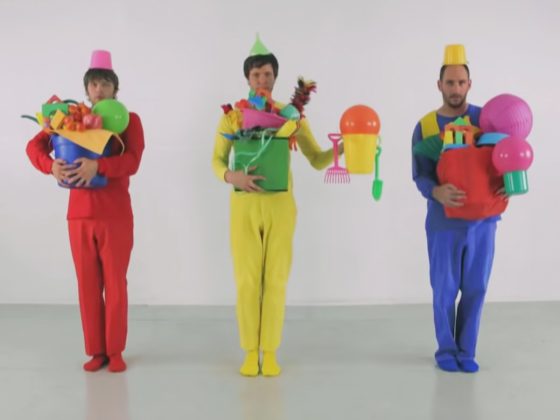
Three Primary Colors
Painting is a great way to let children explore basic concepts of color.
When introducing art to little ones, we can start with the basic elements of art—color, line, shape, texture, and space. In this video, we learn about the three primary colors. After watching, you might play “I Spy” with colors. Say, for instance, “I spy with my little eye something that is red.”
You can also talk about the other basic elements of art, for instance:
Line
- “A line can be straight like a stick, or curvy like a worm.”
- “Lines can be thick like a log, or thin like a noodle.”
- “A line can go up like a wall, across like a table, or diagonal like a slide.”
Shape
- “Let’s find shapes around us.” (a slice of bread is a square, a window is a rectangle, pizza is a circle, and so on)
Texture
- “Texture is the way something feels.”
- “A texture might be bumpy like a basketball, fuzzy like a teddy bear, or smooth like a rock.”
Space
- “When I stand here, and you stand there, there’s space in between us.”
- “Let’s walk around the coffee table. We’re walking in the space around it!”
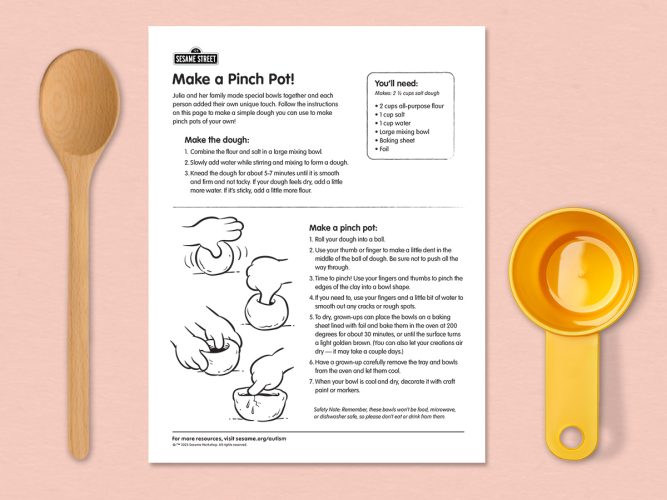
Make a Pinch Pot!
Simple craft instructions to help your family make pinch pots from homemade dough together.
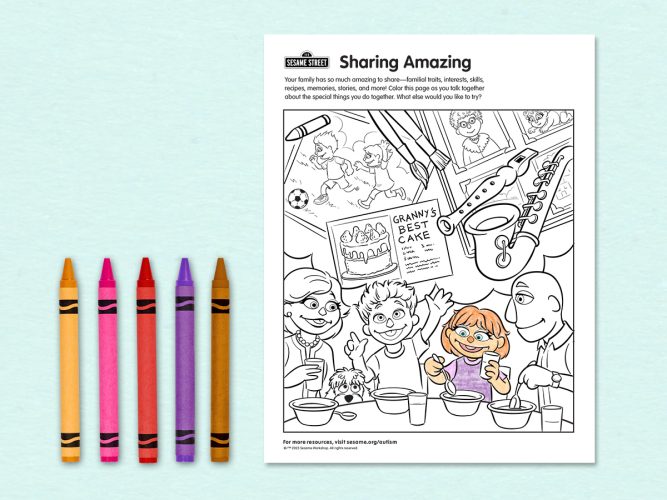
Sharing Amazing
An adult-child coloring page to spark ideas and connection.

Make an Elastic Band Energy Car
Use this fun activity to engineer your own car!

Amazing to Me
When Julia and her family do a special art activity together, Julia finds a way to add her own amazing touch!

Exploring the Amazing in Autistic Children: A Conversation with Camille Proctor, Founder of The Color of Autism Foundation
An article to help parents discover and support their autistic child’s unique perspective and personality
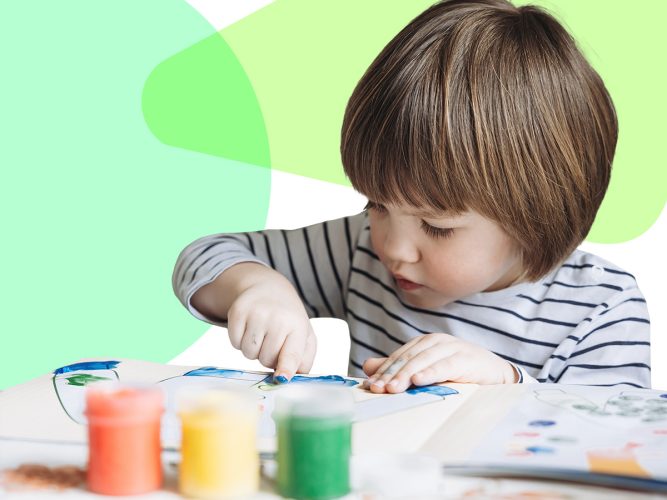
Creative, Talented, Amazing: A Conversation with Anna Wang, Co-founder of FCSN, about fostering autistic children’s talents
An article to help parents foster creative exploration and expression in their autistic child.
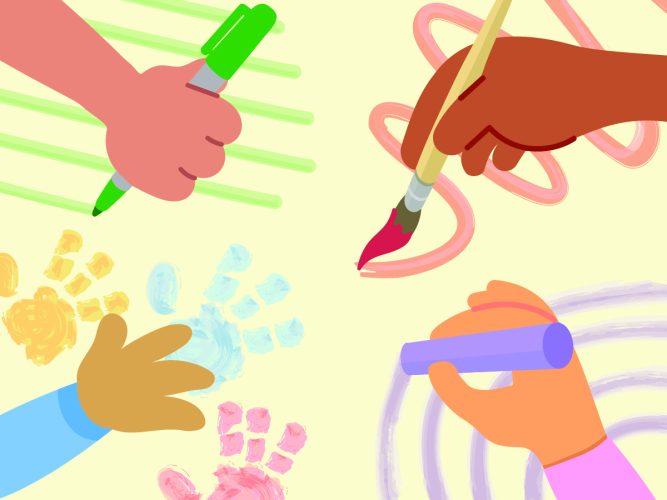
A Conversation About Art Therapy
In this webinar, Sesame Workshop’s Tara Wright, and Art Therapist Natasha Westrich Wood talk together about how young children (and grown-ups) can communicate and express themselves through art.
